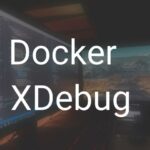1. Stop the endlessly restarting container:
docker stop <container-name>
Please see the reference for docker stop.
2. Start a Docker container in interactive mode (replace the <image-name> with your image name):
docker run -it --entrypoint /bin/bash <image-name>
Here:
docker run— Starts a new container from the image<image-name>. See the reference fordocker run.-it— Runs the container in the interactive mode:-i(or--interactive) — Keeps STDIN (standard input) stream open.
Normally, when you run a Docker container, the STDIN stream closes immediately unless you’re attached to it. The-iflag prevents this, keeping the input channel open.-t(or--tty) — Allocates a pseudo-TTY (short for “pseudo-terminal“).
Without -t, running a container interactively (for example, with a shell) would lack proper terminal capabilities. For example,top,vi, etc. might not work correctly.
(source)
--entrypoint /bin/bash— Overrides the container’s default entrypoint with the bash shell.
Please notice: Some containers do not have /bin/bash. You will see an error like this:
docker: Error response from daemon: failed to create shim task: OCI runtime create failed: runc create failed: unable to start container process: exec: “/bin/bash”: stat /bin/bash: no such file or directory: unknown.
In this case, you can use /bin/sh instead of /bin/bash:
docker run -it --entrypoint /bin/sh <image-name>
3. If your container is based on a Docker Compose file, you can temporarily replace the entrypoint of the container:
services:
wordpress:
container_name: wordpress-wpd
# Temporarily add these 2 lines. Remove or comment them out after debugging:
entrypoint: [/bin/bash] # this line replaces the entrypoint inside the container
command: ["-c", "tail -f /dev/null"] # this prevents the container from starting, executing the /bin/bash shell, and then exiting immediately
Here:
entrypoint: [/bin/bash]— Overrides the container’s default entrypoint with the bash shell.
If your container does not havebash, you can try[/bin/sh]instead.command: ["-c", "tail -f /dev/null"]— Passes parameters to/bin/bash. The container executes:/bin/bash -c 'tail -f /dev/null'-c— Means the following string is a command to execute. See man bash.tail -f /dev/null— A command that will run endlessly and will prevent the container from exiting immediately:
tail -f /dev/null does not consume any resources, because it “follows” the file /dev/null that will never have any new data.
Now, you can run the container:
docker compose up -d
Then you can enter the Docker container terminal by running the command:
docker exec -it wordpress-wpd bash
Here:
docker exec— Starts a new container from the image<image-name>. See the reference fordocker run.-it— Explained right above.wordpress-wpd— The container name. Replace it with your container name.bash— The bash shell (or you can useshinstead).
4. Now you can run commands inside the Docker container, explore volumes, etc.
For example, if the script entrypoint.sh serves as your entrypoint, you can run it manually inside the container to find any errors:
./entrypoint.sh
Of course, any testing or debugging needs to be done in the local development environment, not on production. I prefer to do it on a VirtualBox virtual machine, where I install exactly the same operating system as on a production server.
Conclusion
Thank you very much for reading to the end!
I’d be very grateful for any comments.

![[Docker] How to Set up Postfix Containers and Send Emails From WordPress in Docker](https://www.wpdiaries.com/wp-content/uploads/2020/07/smtp-150x150.jpg)
![[VirtualBox] Configure an Ubuntu 24.04 / 22.04 Virtual Machine for Web Development (Complete Guide)](https://www.wpdiaries.com/wp-content/uploads/2020/09/local-development-environment-150x150.jpg)


